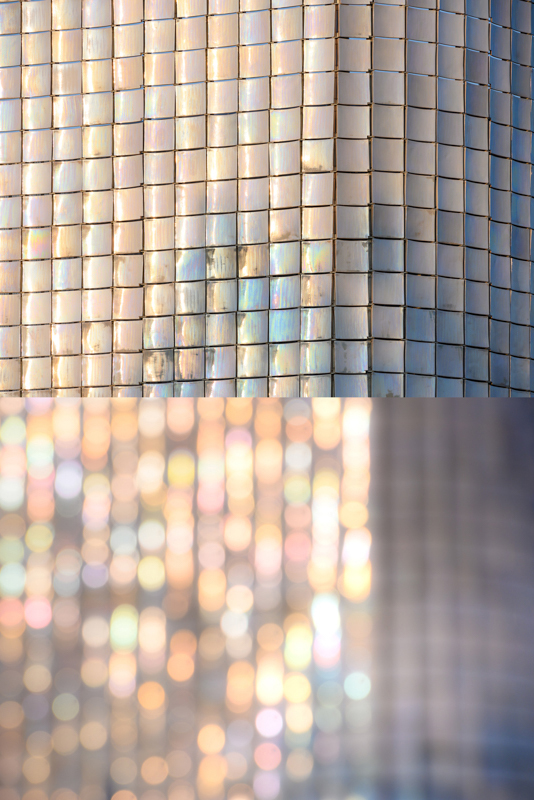THROUGH THE COLLABORATION WITH LOCAL ARTISAN, SARAPHI CERAMICS ARTS AND DESIGNS, SHER MAKER INTRODUCES US TO THE PEARL CERAMIC USED IN PTT GAS STATION IN CHIANG MAI THAT CREATES BOTH DELICATE REFLECTIONS WHEN TOUCHED BY NATURAL LIGHT AS WELL AS EMBRACING THE LOCAL IDENTITY
TEXT: JANJITRA HORWONGSAKUL
PHOTO: RUNGKIT CHAROENWAT
For Thai, press here
Patcharada Inplang, the architect of SHER MAKER chooses ‘pearl ceramics’ to be the material of the façade for the PTT gas station in Saraphi District in Chiang Mai, the firm’s recent renovation project. The material is intended to help bring the locally derived identity into the establishment as well as to establish its contextual connection with the area in which the gas station is located. Nevertheless, in addition to the architect’s intention for the pearl ceramics tiles to contribute in being a special characteristic to the place in hopes of differentiating this particular gas station from other similar establishments, the material itself contains its own interesting qualities.

The distinctive physical characteristics of pearl ceramics is conceived from a combination of knowledge, experiments, and the know-hows of both the architect and the local ceramics manufacturer in Chiang Mai, whose collaboration led to the making of the ceramics tile that bespeaks a new dimension of local artisanal creation. Over 3,500 tiles are produced from the original design, realized with the curved and concaved details that render delicate reflections when touched by natural light. Each tile comes with the 30×30 cm. dimension. With the size that is not considerably big, and the weight that is rather light, the material is ideal for the steel roof structure of the project. The cross-fixed pieces are installed along the galvanized steel roof frame, serving as the foundation on which each ceramics tile is laid while reinforcing the strength of the installation.

“The pearl ceramics, when used with an architectural structure, is often out of place. It is either inferiorly presented if not neglected, but it is actually a beautiful material if you give it a large enough space to fully reveal how it interacts with natural light. The rendered effects are amazing,” explained the architect of SHER MAKER about the reason behind why she chose the material for the façade. However, to achieve the kind of pearl ceramics tile the architect was looking for, the manufacturing process was far from easy. After a considerable period of time searching for the right manufacturer, Inplang finally found Saraphi Ceramics arts and designs whose expertise and experience in pearl ceramics production makes them an ideal collaborator, and together they created the perfect pearl ceramics for the project.

The production process was comparatively longer than that of other materials, for it entailed a complicated procedure of model molding, casting, sun drying (to completely get rid of the humidity) and kiln firing. After the first firing, which rendered the biscuit with an orange texture, the tiles were coated with a substance that would bring the pearly effect to the surface before they went through the final firing. The fact that the tiles were manufactured in lots of only 1,000 pieces at a time, the project ended up taking several months to complete.
While ceramics is considered to be one of Asia’s ancient wisdom and even though many are familiar with cladding materials such as Chiang Mai’s Din Khor tiles, which have been used throughout the history of the city’s architecture, the material is rarely used in contemporary architectural works. The white-based pearl ceramics is, too, a material that has long been neglected by the locals, architects, as well as manufacturers. Nevertheless, by shifting the way it can be used, and the way it can be perceived, to be at the right place and the right time while continuing to develop this existing local know-how and wisdom, the project sends some interesting messages about different the possibilities a locally originated material can bring, from its ability to create a work of architecture that beautifully and meaningfully embodies the local identity in its existence as something people can relate to and take pride in.



